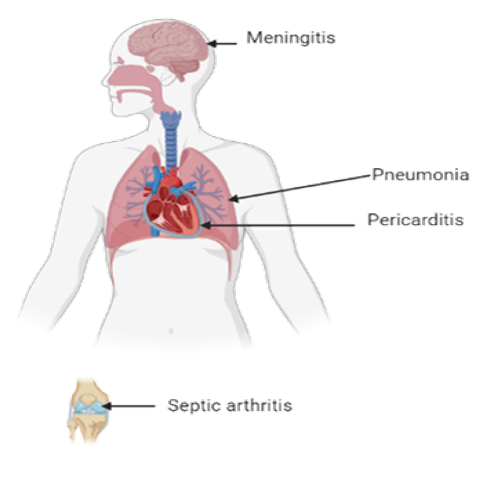Disease
Risk factors for meningococcal disease
Newborns and infants are particularly at risk for meningococcal disease in endemic regions, followed by adolescents and young adults. Nonetheless, during epidemics, all age groups are affected, with important cases among adolescents, young adults and the elderly.
Other risk factors include:
- Non-immunised groups
- Concomitant viral infection
- Overcrowding
- Immunodeficiency (HIV, complement deficiency, cancer)
- Malnutrition
- Tobacco use
- Climate factors (winter, dry season)
Survivors can be left with severe sequelae including: hearing loss, seizures, cognitive, motor and behavioural impairment and in severe cases limb amputation.
Meningococcal septicaemia (meningococcemia)
Meningococcal septicaemia is a serious blood infection (blood poisoning or sepsis) caused by Neisseria meningitidis. It is a devastating complication that can be present concomitantly with meningitis. It is due to rapid bacterial proliferation and production of endotoxins (lipooligosaccharides) that causes lesions in the blood vessels, leading to vascular collapse and disseminated intravascular coagulation (a blood clotting disorder).
The initial presentation includes non-specific upper respiratory symptoms with: fever, runny nose, sore throat, headache. It progresses with vomiting, drowsiness, cold hands and feet, a characteristic haemorrhagic rash, evolving to shock and death in less than 24h after initial symptoms.
Characteristic skin lesions include petechiae, purpura and ecchymosis, seen in up to 60% of cases. Purpura can be confirmed with the glass test and can be difficult to identify in people with darker skin tone, but can be clearly seen by examining the inside of the eyes (or the inside of the mouth) and the palms of hands and soles of feet (see the NHS page for more information).
On rare occasions, meningococcal septicaemia can present as a chronic disease, with fever, arthritis and a rash lasting for more than a week without treatment. Nonetheless, treatment is required to eliminate symptoms and halt disease progression and death.
Other clinical presentations include pneumonia, pericarditis and septic arthritis.








